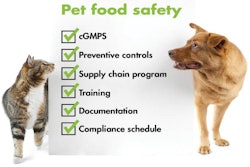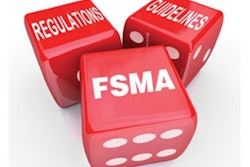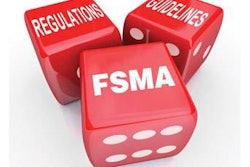A 2001 guidance document from the US Food & Drug Administration (FDA) made clear that it objected to claims such as "no GMOs" and "GMO-free" on both food and feed labels (including those for pet foods). Notwithstanding this long-standing regulatory position the term is frequently seen on human food labels with apparent impunity, but pet food manufacturers have often run into objections from some state feed control officials. However, a recent change to the FDA document may alleviate some of the restrictions placed on pet food companies (see link).
The "GMO" in "GMO-free" and similar claims stands for "Genetically Modified Organism." FDA has issues with use of the abbreviation (or the full term, for that matter), for several reasons:
- Except for items like yogurt, the vast majority of foods do not contain any complete "organisms." In consideration of potential confusion by the average consumer about the meaning of the term, then, its use was not acceptable.
- "Genetically Modified" is also considered potentially confusing, as there are a broad range of methods by which genes may be modified. In fact, traditional breeding techniques that are used to alter the genetic composition, and hence the characteristics of a plant or animal, have been employed by man since the beginning of domestication of these species. Except for food from indigenous flora and fauna, then, virtually everything you eat is the result of gene modification, and a claim that a product is not "genetically modified" is most likely not correct. More accurate terminology would be in reference to "genetic engineering" or "bioengineering."
- Words like "free," in the absence of any explicit regulatory standard to establish otherwise, imply complete and utter absence of a substance. For "gluten-free," for example, FDA has set a specification for it to mean no more than 20 ppm, but it has not done the same for GMOs. Even if a plant is grown without use of biotechnology, there is still a risk of cross contact with genetically engineered materials elsewhere along the production stream. Testing methods are simply not rigorous enough to verify the complete lack of GMO, especially for a processed and complex item like a pet food. Lacking such reliable methodology, FDA is very reluctant to accept any "free"-type claims.
When the FDA guidance was first made public in 2001, there may have been good reason for due caution regarding use of terms such as "GMO," as the average consumer might have been confused as to its meaning. Some may argue that is still the case, though it is undeniable that there has been much more public exposure to the terminology over the years. In any event, FDA has toned down its rhetoric. The agency still believes the term to be confusing for the reasons cited above, but now only "encourages" companies to consider the use of phraseology more to its liking. Claims to which FDA would not object (assuming they were truthful and not misleading) would include:
- “Not bioengineered.”
- “Not genetically engineered.”
- “Not genetically modified through the use of modern biotechnology.”
- “We do not use ingredients that were produced using modern biotechnology.”
This suggested verbiage is not notably different from past guidance, but the document goes on to say: "However, FDA does not intend to take enforcement action against a label using the acronym 'GMO' in a statement indicating that the product (or an ingredient) was not produced through the use of modern biotechnology as long as the food is, in fact, not derived from a genetically engineered plant and the food’s labeling is not otherwise false or misleading." This does alter things considerably.
State feed control officials have often relied on the FDA guidance in their reviews of pet food labels. So, while this FDA policy may not have been rigorously enforced on human food labels, many manufacturers of pet foods have been told in no uncertain terms to remove any reference to "GMO" or face a denial of state registration or other enforcement action. Now, it seems there would be a basis for states to tolerate some uses.
"GMO-free" may still be tricky, as the means to substantiate that a product is truly devoid of any and all bioengineered materials is difficult. However, this guidance would appear to allow some leeway for other uses of the term "GMO" in conjunction with other acceptable verbiage. For example, a "GMO" within a circle and a line through it may be more tolerable than in the past, provided a phrase such as "We do not use genetically engineered ingredients" is in immediate proximity to the symbol. This would allow the pet food manufacturer to capture the attention of the consumer via use of the term, but still fall within FDA guidance.
Further industry guidance

















